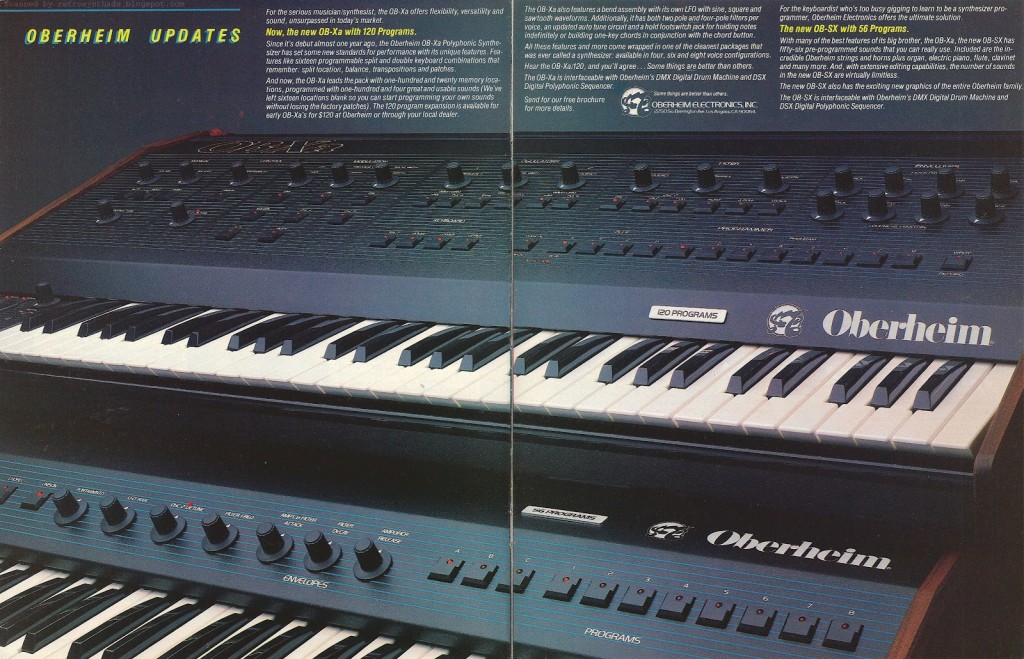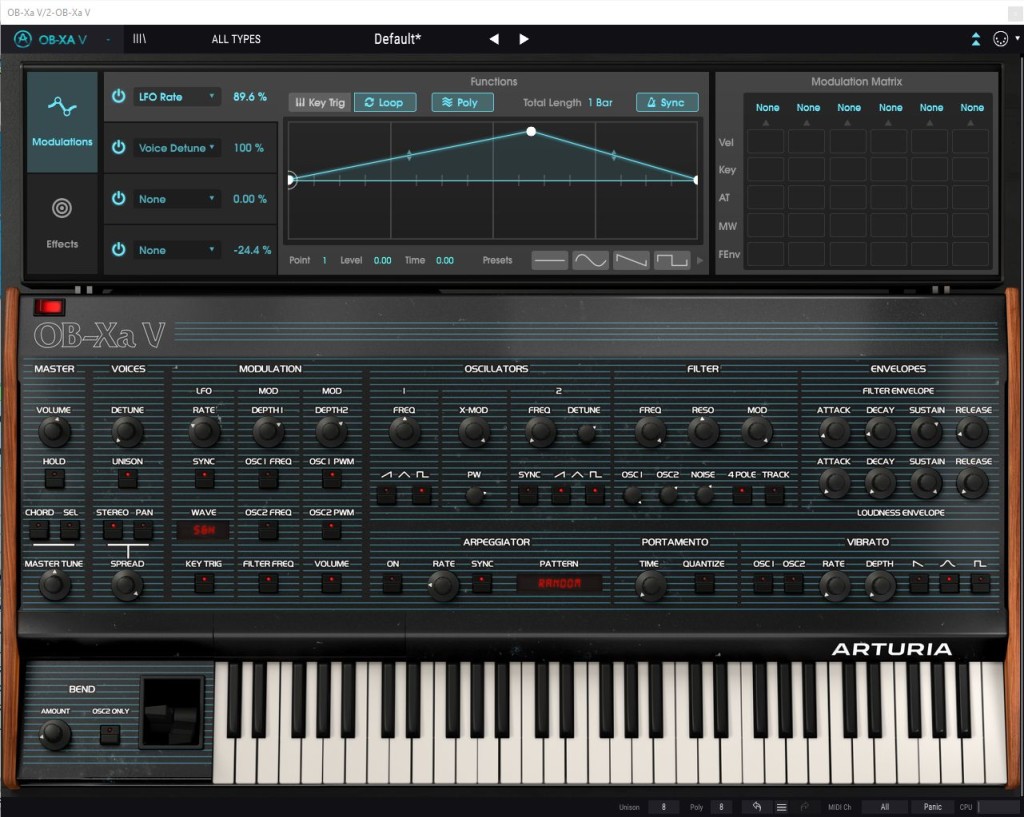Arturia today has unveiled a software reproduction of the epic OB-Xa – and it might feel as powerful in 2020 as the original did in 1980.
I would presume there are two major markets for remakes and clones of past synths. You’ve got people wanting to use the instruments of some of their favorite artists. And you have people interested in the synth for its own sake – because it may hold up.
There’s just thickness and evil accessible everywhere. Having modern plug-in features and modulation to drive it just makes it that much more capable of sheer havoc.

Can we have marketing that looks like this again, please?
The OB-Xa, a beefy, buttery rival to Sequential’s Prophet line, was what Gary Numan once said was the best analog synth – ever. It was physically massive, but also sonically thicker than anything – because inside the different voices are set up to compete with one another as much as coexist. And by compete, I mean growl and tear at each other.
So yes, yes “Prince, The Police, Queen.” And nowadays, as Arturia puts it: “the likes of Flume, Chrome Sparks, Calvin Harris, and Venetian Snares.” (I wanted to copy-paste that just because I am sure those artists have never been in a sentence together.)
But the OB-Xa holds up, too, even if you’d never heard it before.
Arturia are not the first to make a software version of this instrument – in fact, MusicRadar has a great round-up of software from some years back.
But the OB-Xa both exploits modern modeling technique and adds a bunch of extras in the area of modulation and effects. In fact, in some way, this is as close as you’ll get in software to a spiritual sibling to the awesome Sequential OB-6, made in collaboration between Dave Smith and Tom Oberheim. That’s not so much to say the Arturia OB-Xa is cloning the OB-6 as it is that this being software, you get the same sort of modulation routing and digital effects the hardware gives you. If you’ve got three grand at hand, get the OB-6. For the rest of us, the OB-Xa plug looks about perfect.
Arturia’s add-ons just make sense.
You have all the access to Oberheim’s intuitive layout for frequencies, filters, and noise.
The classic Curtis-style filters are also well represented in emulated form, with both 12- and 24-dB versions. It’s too bad there isn’t a switchable filter as on the original OB-X, though. You might also check out Arturia’s SEM filter emulations, while you’re at it.
But you also get a stereo spread (perfectly suited to that thick sound), an arpeggiator, a massive unison mode, plus a full 16-voice polyphony and four function generators. And there’s cross-modulation, which is utterly addictive.
It all hangs together so well, in fact, that you almost feel like the OB-Xa panel had some of these things on it, even if it didn’t. And that’s where you could say Arturia have made a genuinely new instrument.

The cross-modulation, loosely based on the 0-to-1 switch on the OB-X (but dropped from the OB-Xa), is I think my favorite feature. One oscillator modulates the other, which gives you a rich, edgy result – and since it’s a knob, not a switch, there’s a lot of potential to play with.
I’m not quite ready to release a preset bank yet (uh, should I?) but just so you hear that this doesn’t only sound like what you associate with 80s pop:
Should you go back to 1980, or just take the same approach with other, more modern plug-ins? (Arturia still have an intro deal to try out their Pigments synth, for example.) That I can’t answer, but… there is something special about the Oberheim that lets it situate itself in both decades at once.
Arturia has an intro price of US$149 / EUR149 through the 9th of June, before it increases to its regular 199 street.
https://www.arturia.com/products/analog-classics/ob-xa-v/overview